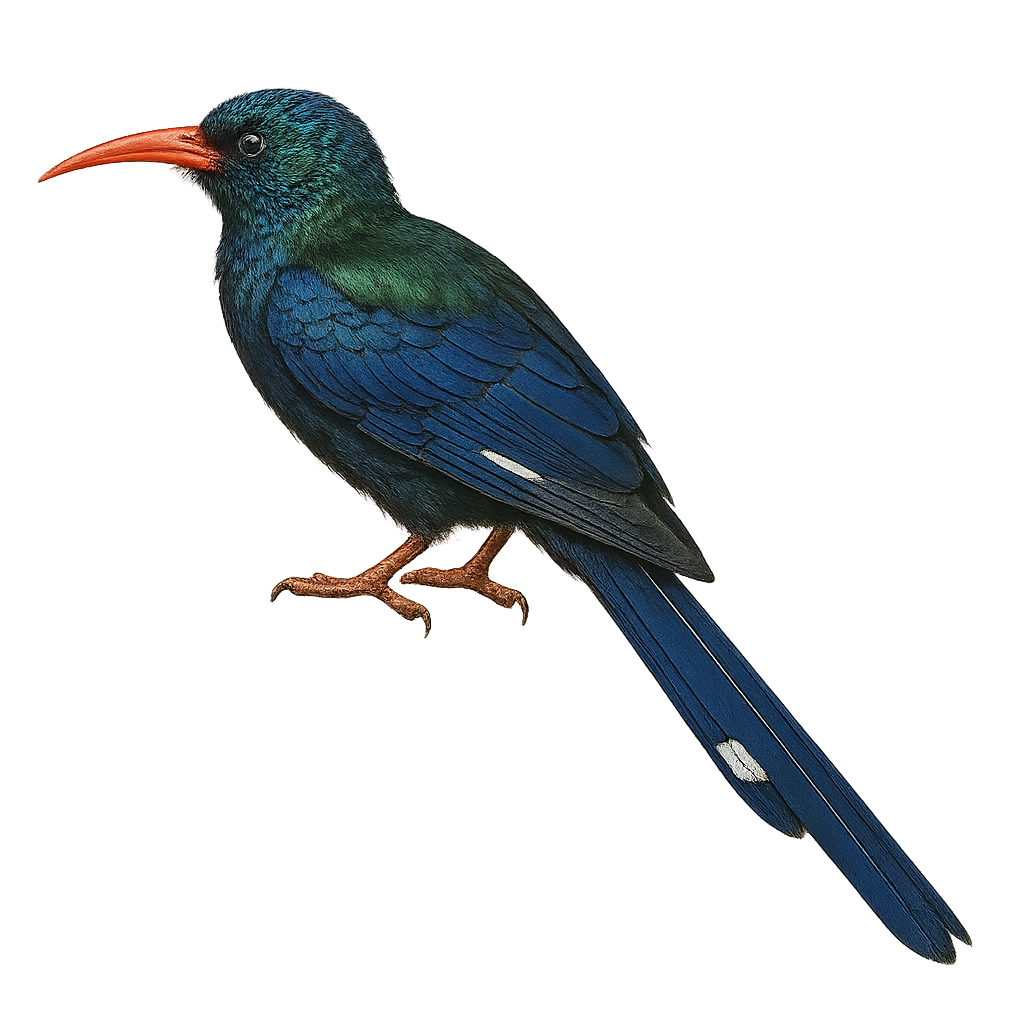Your wildlife photography guide.
Explore the green woodhoopoe in detail, study its behavior, prepare your shots.
Where to observe and photograph the green woodhoopoe in the wild
Learn where and when to spot the green woodhoopoe in the wild, how to identify the species based on distinctive features, and what natural environments it inhabits. The WildlifePhotographer app offers tailored photography tips that reflect the green woodhoopoe’s behavior, helping you capture better wildlife images. Explore the full species profile for key information including description, habitat, active periods, and approach techniques.
Green Woodhoopoe
Scientific name: Phoeniculus purpureus

IUCN Status: Least Concern
Family: PHOENICULIDAE
Group: Birds
Sensitivity to human approach: Suspicious
Minimum approach distance: 10 m
Courtship display: September to December
Incubation: 15-17 jours
Hatchings: September to January
Habitat:
Wooded savannas, open forests
Activity period :
Primarily active during the day, with peak activity in the morning and late afternoon.
Identification and description:
The Green Woodhoopoe, Phoeniculus purpureus, is a striking bird with metallic green plumage that shimmers with purple and blue hues. It has a long, curved bill perfect for probing tree bark for insects. This social bird lives in family groups of up to a dozen individuals and is found mainly in the wooded savannas and open forests of sub-Saharan Africa. Its call is a series of rhythmic, repeated cries often likened to laughter. The Green Woodhoopoe is diurnal, active mainly in the morning and late afternoon. Although not currently threatened, deforestation poses a potential risk to its natural habitat.
Recommended lens:
400 mm – adjust based on distance, desired framing (portrait or habitat), and approach conditions.
Photography tips:
To photograph the Green Woodhoopoe, it is advisable to use a 400mm or longer telephoto lens to capture the details of its iridescent plumage without disturbing it. Approach slowly and maintain a distance of at least 10 meters to avoid startling the bird. Opt for morning or late afternoon hours when natural light highlights the bird's vibrant colors. Be patient and wait for it to be actively foraging to capture dynamic shots.
The WildlifePhotographer App is coming soon!
Be the first to explore the best nature spots, track rutting seasons, log your observations, and observe more wildlife.
Already 1 431 wildlife lovers subscribed worldwide

